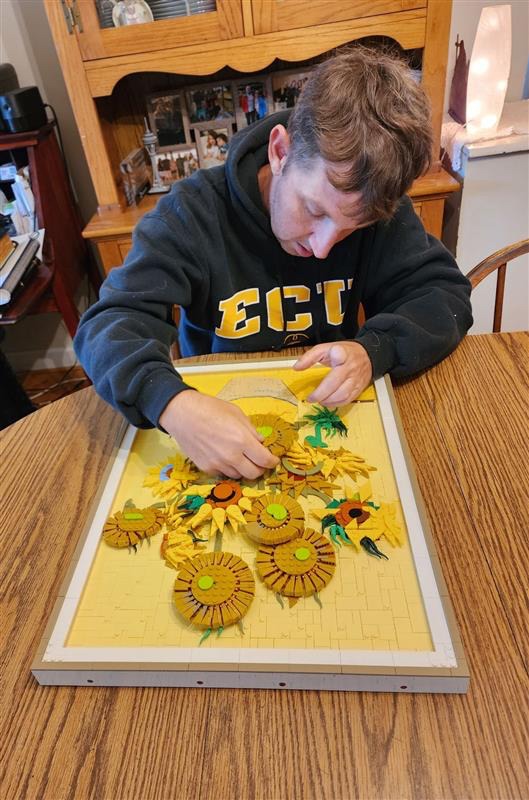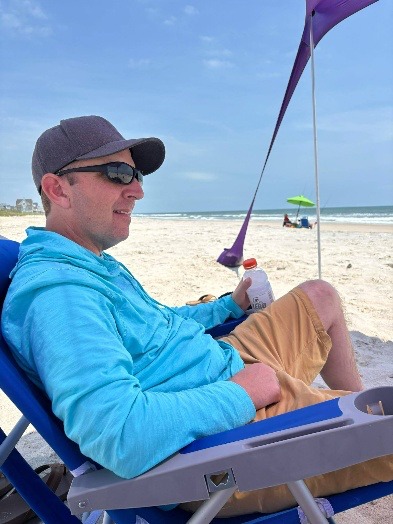North Carolina man shares his 28-year experience with drug-resistant epilepsy and the life-changing impact of VNS Therapy™
At age 11, Will Smith experienced something he couldn’t quite explain—a strange taste in the back of his mouth, followed by what he describes as an “out-of-body experience” where everything seemed surreal despite being fully aware of his surroundings. This marked the beginning of a lifelong journey with complex partial epilepsy that would challenge him in ways he never imagined.
Now 39, Smith is one of more than 135,000 North Carolinians living with epilepsy, according to the Epilepsy Foundation of North Carolina. His story illustrates both the challenges and hope that define life with this neurological condition, particularly for those with drug-resistant epilepsy (DRE).
Breaking Through Misconceptions
When Smith received his diagnosis at age 12, he found himself grappling not only with a complex medical condition but also with widespread misconceptions about epilepsy.
“I was sort of oblivious, like okay, so what is this?” Smith recalls. “I only knew the stereotypes. Most people, when they hear seizures and epilepsy, think about the typical grand mal seizures and shaking. But once it was explained that I have complex partial epilepsy and the details about what it was, I was just baffled even more.”
This confusion is common among newly diagnosed patients. Epilepsy, the fourth most common neurological disorder after migraine, stroke, and Alzheimer’s disease, affects approximately 3.4 million Americans and 50 million people worldwide. However, public understanding of the condition often remains limited to the most visible seizure types.
The Challenge of Drug-Resistant Epilepsy
Smith’s case represents a particularly challenging subset of epilepsy patients. About one-third of all people with epilepsy have drug-resistant epilepsy, meaning their seizures continue despite trying multiple anti-seizure medications. Research shows that if two medications fail to control seizures, most people will not achieve seizure freedom with a third medication.
“While medication is the first line of treatment for epilepsy, many patients continue to be prescribed additional medications instead of being evaluated for non-drug therapy options,” medical experts note. This treatment gap can lead to increased hospital visits, mental health challenges, cognitive changes, and social difficulties.
A Breakthrough Through Medical Innovation
Smith’s life took a significant turn in 2005 when, at age 19, he received a Vagus Nerve Stimulation (VNS) Therapy device. This innovative treatment, developed in the mid-1990s, offers hope for patients with drug-resistant epilepsy.
The VNS Therapy device is implanted under the skin in the chest during an outpatient procedure and connects to the left vagus nerve. “It runs a line up to my left vagus nerve, which then will send small pulses through the left vagus nerve to areas of my brain that are associated with seizures,” Smith explains.
The device operates in multiple modes: a normal mode that sends regular pulses throughout the day, a magnet mode that allows patients to trigger additional stimulation when they feel a seizure coming, and newer versions such as, LivaNova’s AspireSR Model and the SenTiva Model include an auto-stimulation feature that monitors heart rate changes during seizures.
Transforming Quality of Life
The impact of VNS Therapy on Smith’s life has been profound. “I’ve had fewer seizures. I live by myself. I have graduated college. I have a bachelor’s degree,” he says. “I myself had auras, which was like a warning that a seizure was coming, and I no longer have auras and will rarely if ever have a seizure.”
Perhaps equally important, VNS Therapy allowed Smith to reduce his medication burden while maintaining better seizure control. This improvement enabled him to achieve milestones that once seemed uncertain, including living independently and completing his education.
Smith has now had three different VNS Therapy devices over nearly two decades, as the battery-operated units require replacement every 5-10 years. The procedure remains outpatient, with minimal recovery time—”a couple of weeks,” according to Smith, for the first implantation of the device.
The Power of Support Networks
Over the years, Smith has learned the crucial role of support systems — like online Facebook groups — play in his journey with epilepsy. His neurologist, whom he knew for over 10 years, also played a pivotal role not just in medical care but in emotional support.
“Since he and I had the history that we had together, we were able to have open discussions about several things, not just about treatment options, but also I was able to open up to him about how I was feeling emotionally,” Smith reflects. “I opened up to him about how I was feeling down and out about having epilepsy and not feeling like I had anyone to relate to.”
The neurologist’s suggestion to explore online support groups proved transformative. “It was comforting to know that there were others who were going through the same problems,” Smith says. “It was comforting to know that there were others who could relate or that I could relate to.”
Smith also credits his dog Sherlock, now nearly 14 years old, as “freelance therapy,” providing emotional support and companionship throughout his journey.
Finding Purpose in Advocacy
Today, Smith’s daily life revolves largely around helping his parents and maintaining his independence. He pursues hobbies like building complex LEGO sets—including a 10,000-piece atlas completed in just a week and a half—demonstrating the focus and determination that have characterized his approach to living with epilepsy.
His experience has made him a passionate advocate for others facing similar challenges. “Don’t be afraid to advocate for yourself,” he urges. “It’s important to do your research. Learning about treatment options like VNS Therapy can help you have informed conversations with your doctor about what may be right for you.”
Professional Insights and Perspective
Smith’s advice reflects a growing understanding among healthcare professionals about the importance of patient advocacy and comprehensive care. His emphasis on researching treatment options, maintaining open communication with medical providers, and seeking peer support aligns with best practices in chronic disease management.
He draws inspiration from Jerry Kill, the former University of Minnesota head football coach who also lives with epilepsy: “Seizures are like fumbles. They come when you least expect them. They may be a temporary setback, but they can’t stop you from playing to win.”
A Message of Hope
Perhaps most powerfully, Smith offers perspective to others newly diagnosed with epilepsy. Reflecting on his journey, he says, “If 39-year-old me could talk to 12-year-old me… 39-year-old me would tell 12-year-old me, look, you got this, that, and the other coming up. And then you’re going to end up here as me at 39. It’s all going to be OK, kid.”
His central message remains consistent: “Don’t let epilepsy control your life. Advocate for yourself. Don’t be afraid to ask questions.”
Looking Forward
While Smith acknowledges that VNS Therapy isn’t a cure and doesn’t work equally well for everyone, his experience demonstrates the potential for people with drug-resistant epilepsy to lead fulfilling, independent lives. His story underscores the importance of exploring all treatment options, building strong support networks, and maintaining hope even in the face of challenging diagnoses.
For the thousands of North Carolinians and millions worldwide living with epilepsy, Smith’s journey offers both practical guidance and inspiration—proof that with proper treatment, support, and advocacy, epilepsy doesn’t have to define the limits of what’s possible.





